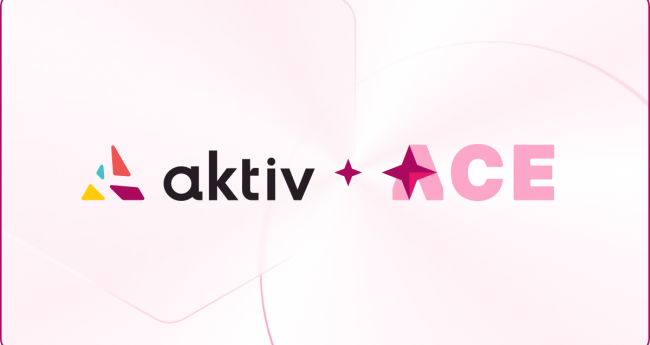Going by many names – Classroom/Personal/Student Response Systems – clickers have been an important part of lectures for decades. In theory, their pedagogical applications are valuable for engagement and active learning. Over time, they have evolved from multiple-choice question types on physical devices resembling remotes, to subject-neutral web-based apps with similarly limited question types, to today’s optimized technology and pedagogy – subject-matter-specific web-based systems!

Traditional Clickers
If the pandemic taught us anything, it’s that instructors are always looking for ways to keep students engaged. Students listening to a passive lecture is not enough. Recent studies have shown that active learning is an effective way to close achievement gaps for STEM students who are underrepresented and of less advantaged academic backgrounds. An active approach where students learn by doing beats a dull drill where students robotically copy notes off a screen.
Before modern technology, getting every student to participate was an ambitious task. After emerging in 1998, clickers were a remedy for engagement by promising an environment of student-centered active learning. With clickers, class participation extended beyond ‘first row’ students and allowed the shy, unconfident, and/or introverted students to have a say. Early clickers and current subject-neutral web-based apps were designed for simple multiple choice (polling) questions. This gave instructors some feedback (albeit limited) on how their class is doing. While it seems definitely better than lecture-only classes, multiple choice questions lack problem-solving depth. This is especially limiting for a subject like chemistry that requires extensive application. Students need to be able to practice concepts in diverse ways including, but not limited to: dimensional analysis, structure drawing, equilibrium calculations, chemical equations, reaction mechanisms, and so on.
Here’s a list of the limitations of traditional clickers:
- Pricing of the past – Clicker pricing models are outdated. The physical devices are often costing up to $80, not to mention maintenance costs through batteries and/or subscription fees!
- Device specific – If you forgot your clicker at home, you’re tough out of luck. There would be no alternative as you sat in class watching fellow classmates use theirs, missing out on practice and participation points. Plus, even if you did remember, it would just be another device to carry around.
- One question at a time – Pacing is mismatched since clickers can only push out one question at a time. Students who are already competent finish questions quickly and become bottlenecked into an idle state of boredom. Those who are struggling have no alternatives but to wait to try the next question. “I would have the TA go through the PowerPoint [I created], a question at a time, as the students respond with clickers,” says Scott Reid, Chair and Professor of the Chemistry Department at Marquette University. “Ask a question on this topic, get responses from students, look at those responses and then move on. And I think that in itself is limited.”
- Limited question types – With only a few buttons on the device, clickers were limited to multiple choice questions. For Chemistry, complex concepts such as structure drawing, dimensional analysis, ICE tables, and reaction mechanisms could not be properly assessed.
- Limited feedback – Clickers only let you respond to questions. Students had to rely on their professors to go over the answers (if the professors themselves decided to).
- Hardware problems – Just like an old TV remote, clickers felt and looked like they were stuck in the 90s. Relying on IR technology meant that there would be syncing issues here and there preventing a smooth experience.

Next Generation Clickers
Traditional clickers were a stepping stone in the right direction. Engaging students in the classroom is an ever-present need. But the few problems they solved were overshadowed by a number of limitations. Instructors and students needed a system that reflected the modern world, and what better way than by using a device that (mostly) everyone had in their pockets?
Enter the ‘next generation’ of classroom response systems (CRSs) that use smartphones. Companies such as Socrative and TopHat started to offer a web based platform, and even clicker companies like i>clicker joined the game. Smartphones removed some of the barriers posed by traditional clickers. Namely, they freed students from buying an extra device and were more reasonably priced. Despite these improvements, however, the core issue remained: depth of problem-solving. Web-based CRSs did offer more question types beyond multiple choice such as true/false, target, numeric entry, and short answer, but they continue to fall short for chemistry courses which require subject-specific question types.
Subject-Matter Specific Response Systems
Technological advances in web based response systems let us move past the oh-so-cumbersome device restrictions of traditional clickers. To up the ante pedagogically, platforms like Aktiv Chemistry came along as subject-matter-specific response systems. Rather than reinventing the wheel, Aktiv Chemistry ironed out the issues of past iterations of clickers with a number of improvements:
- Accessible on any web device – Not only smartphones, but Aktiv Chemistry’s platform can be accessed by tablet or laptop too. “[My students] don’t have to buy another device,” says Mark Blaser, Faculty at Shasta College. “Everyone brings their cell phone with them. They don’t forget it. A lot of people would forget to bring their clickers with them to class.”
- No lock-step pace with one-question-at-a-time – The issue of a lock-step pace is solved with the ability to push out multiple questions at once. “I think one of the advantages here is that you can push out several questions,” Scott Reid says. “And so the students that are going to get it are going to get it…. The students that are struggling though, you’re giving them an opportunity to catch up because you’re not forcing everyone to move along at the same pace.”
- Multiple attempts with smart feedback – For most clickers, it’s a one and done process where students input their answers and wait for feedback. With Aktiv Chemistry, students not only have multiple attempts but receive pedagogically-intelligent feedback that addresses underlying misconceptions without giving away the answer.

- Chemistry-specific question types – Students can come from a wide spectrum of preparation levels and interest in chemistry, thus interactive questions types are needed to explore concepts in-depth. By having various scaffolded question types beyond just multiple choice, students can get practice in topics ranging from structure drawing, dimensional analysis, reaction mechanisms, and more. When it comes to using the Aktiv Chemistry app, Mallory Mentele’s students found it to be “fun” and “almost like a game.”
- Question bank and authoring – Having plentiful questions to choose from when creating assignments can make the lives of instructors easier. With Aktiv Chemistry’s 15,000+ question bank instructors can give each student an individual problem-solving experience or use the same sets for group problem-solving. Additionally, instructors have the flexibility to author their own questions if they’d like. Anthony Durante, Faculty at the Bronx Community College, had this to say about the feature: “What I like most about using Aktiv Chemistry is the fact that I go to a question bank with several thousand questions and I can just pick and choose a question that meets the needs of the students that is parallel to the topic we are teaching.”¹
- Algorithmic Randomization – With Algorithmic Problems and Question Pools, Aktiv Chemistry can randomize the content that is delivered to each student during assignments. Individual students can have a unique experience while groups of students can work on the same concept but not the exact same question. This also promotes academic integrity through question variations.
- Access after school – Students and instructors especially love that these questions on Aktiv Chemistry don’t “disappear” like clicker questions and can be revisited and reattempted. Instructors can have students refer to these questions even during office hours. Take it from Scott Reid, who uses Aktiv Chemistry as a means to deliver problem-solving experiences for his students:

- More than just a clicker – Clickers are usually limited to use cases in class as polls, quizzes, or attendance taker. Aktiv Chemistry’s platform takes it one step further and can be used as homework and practice as well. Instructors simply pull in questions for each different use case and manage all their prep in one sitting. It can further be shared with other colleagues using the platform or saved for next semester.
The limitations of clickers throughout the ages pushes instructors to seek better alternatives. With the all-in-one Aktiv Chemistry platform, you can have a subject-specific classroom response system that overcomes the challenges of clickers and other web based platforms and keeps your students engaged.
Book a free demo with us today to see Aktiv Chemistry in action!




